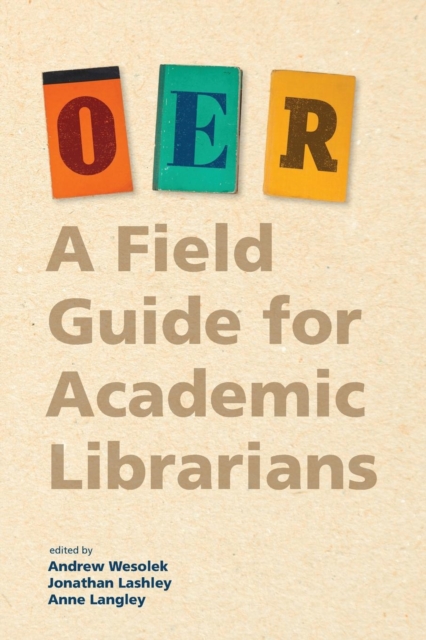
Oer : A Field Guide for Academic Librarians Paperback / softback
Edited by Andrew Wesolek, Anne Langley, Jonathan Lashley
Paperback / softback
Description
For many of us, the drive to affect positive change—however vague or idiosyncratic our sense of this might be—has guided our work in higher education. We champion the pursuit of a college degree because few endeavors can match it in terms of advancing a person’s economic mobility (Chetty, Friedman, Saez, Turner, and Yagan; 2017). Despite recent debates about the value of a college degree (Pew Research Center, 2017), the opportunities and financial stability awarded to those with college degrees remain apparent when they are compared to peers who have only graduated high school (Pew Research Center, 2014). And while more Americans have a college degree than ever before (Ryan and Bauman, 2016), access to a formal, post-secondary education continues to be elusive for some.
Indeed, over the last ten years, analysts have projected that the cost of attending college would keep 2.4 million low-to-moderate income, college-qualified high school graduates from completing a college degree (Advisory Committee on Student Financial Assistance, 2006). During that same period, college students in the United States saw expenses related to tuition and fees increase by 63 percent, school housing costs (excluding board) increase by 51 percent, textbook prices increase by 88 percent (Bureau of Labor, 2016). Because few students can afford a college education by salary alone, 44.2 million Americans have sought financial aid via student loans. As a result, total student loan debt is now topping $1.45 trillion in the United States (Board of Governors of the Federal Reserve System, 2017), and student loan delinquency rates are averaging 11.2 percent (Federal Reserve Bank of New York, 2017). The burden of a student's financial decisions extends beyond the mere individual: society will inevitably carry the weight of this debt for years to come.
Information
-
Only a few left - usually despatched within 24 hours
- Format:Paperback / softback
- Pages:468 pages, Illustrations, black and white; Illustrations, black and white
- Publisher:Pacific University Press
- Publication Date:30/11/2018
- Category:
- ISBN:9781945398797
£17.99
£17.05
Information
-
Only a few left - usually despatched within 24 hours
- Format:Paperback / softback
- Pages:468 pages, Illustrations, black and white; Illustrations, black and white
- Publisher:Pacific University Press
- Publication Date:30/11/2018
- Category:
- ISBN:9781945398797






